


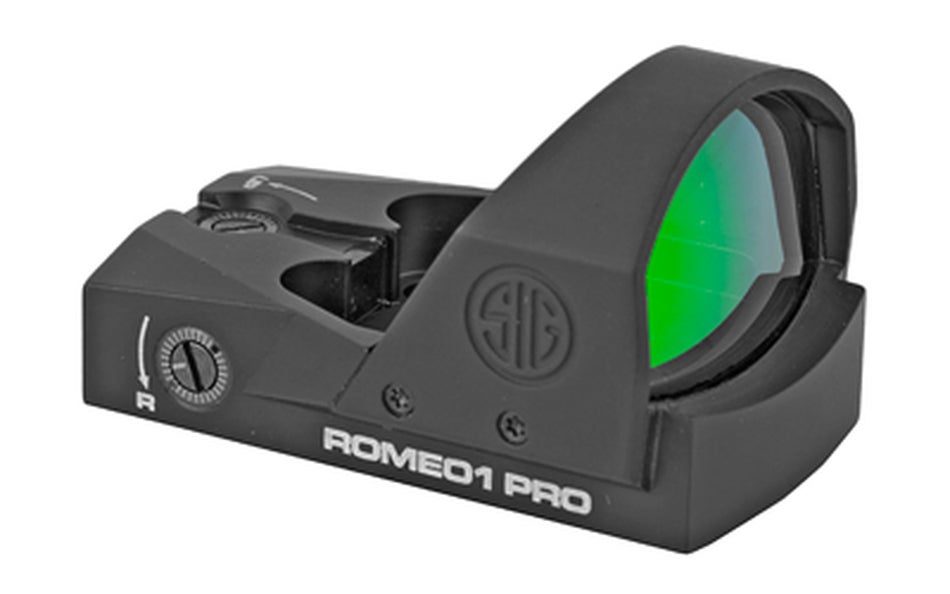
AllOutdoor Review: Sig Sauer Romeo 1 PRO – Unboxing & Thoughts
Travis Olander 05.08.23
Micro red dots have taken the ‘tacticool pistol’ category by storm, with many daily-carry handgun owners even ditching their iron sights completely for a tiny lil’ laser sight. Alleged king o’ the micro red dots, the Sig Sauer Romeo 1 PRO: How well does it work? Is it really the best? Worth the $400 rub? Find out.

The Romeo 1 PRO doesn’t look too far off from most other pistol-sized red dot sights. It’s svelte and sports cool, geometric lines amongst its aluminum body, something like a stealth fighter in profile. There’s not a single plastic bit to speak of, which I love. It gets a nice, tough but thin aluminum hood for protecting the glass, with click-dial adjustments for windage and elevation. There’s even a protective stamped steel sleeve one can install for added protection on duty or in the field, but we’ll look at that later. Let’s look at the juicy specs:

Let’s dive into unboxing, first impressions, and a full review.
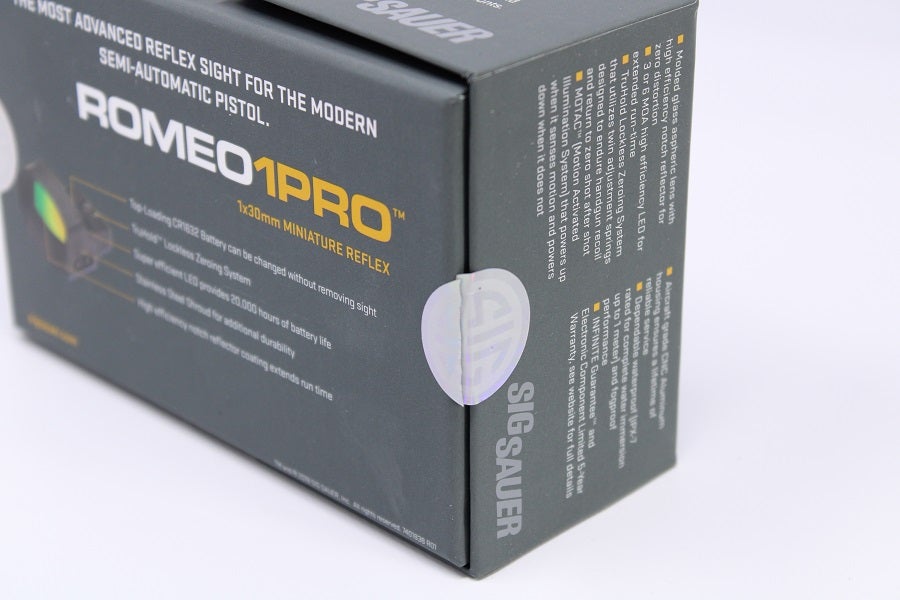
The Romeo 1 PRO ships in a nice little display box complete with “SIG”-embossed holographic security stickers. Inside, we find the goods well-packaged and organized with a foam insert.
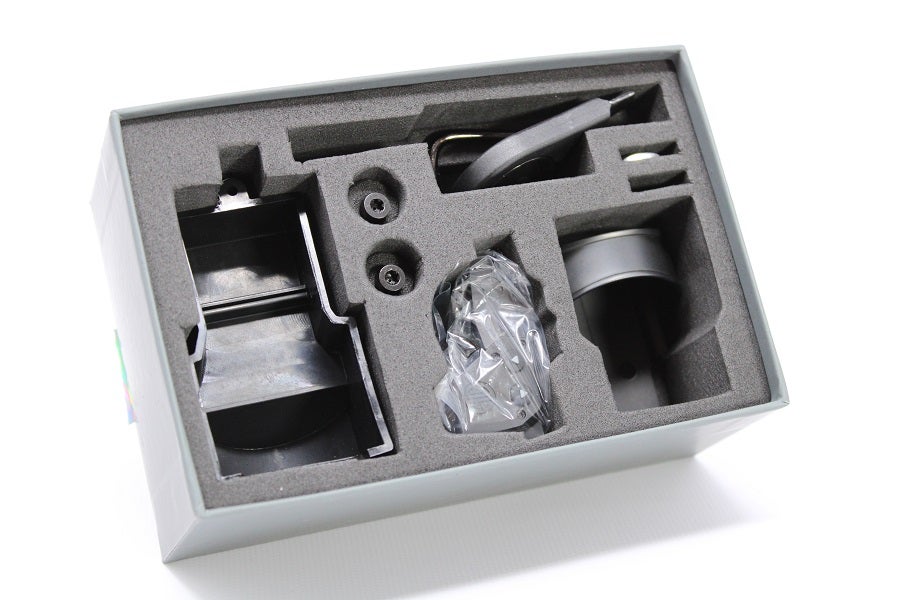
Not pictured is a detailed color user manual, complete with setup, specifications, warranty info, and operating procedures. I’ll go over all that in the guide. This little container makes for a nice storage system if you don’t throw it out. It’s certainly a nicer presentation than many red dots, one that’s not simply disposable for shipping. That’s something I expect from Sig, especially at this price point.
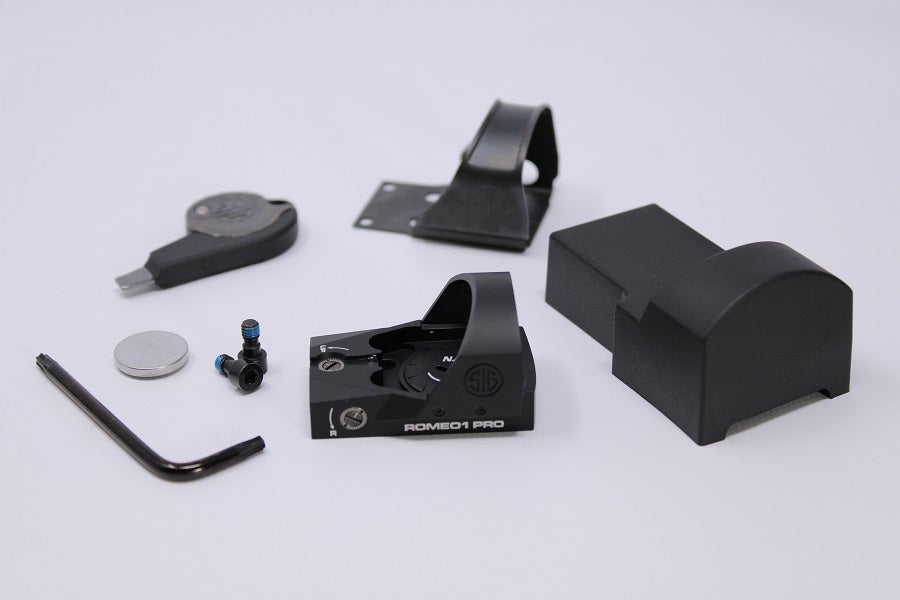
The Romeo1 PRO includes the mounting hardware with blue loctite applied. Sig Sauer recommends about 10-12 in. lbs. of force when it comes to the install, which is moderately hand-tight.
The stainless shroud acts as an extra layer of protection for the Romeo 1, a piece I was pleasantly surprised to find included free of charge. The shroud is lightweight and doesn’t add extra bulk since it’s fabricated with relatively tight tolerances around the red dot. We’ll look at that later.
The sight cover is little more than a basic bump and dust cover, but it adds that extra layer of protection when you’re throwing your piece into storage or transporting it.
Battery included. The CR1632 provides the Romeo 1 PRO with about 20,000 hours of life.
The multi-tool includes a flip-open battery compartment for storing an extra CR1632, and two flats – one for fixing the threaded battery cover, and one for making your windage and elevation adjustments on each dial. A small hole allows the tool to be fixed to any keychain.
The Romeo 1 PRO is tiny. Look at it sitting next to a U.S. quarter.
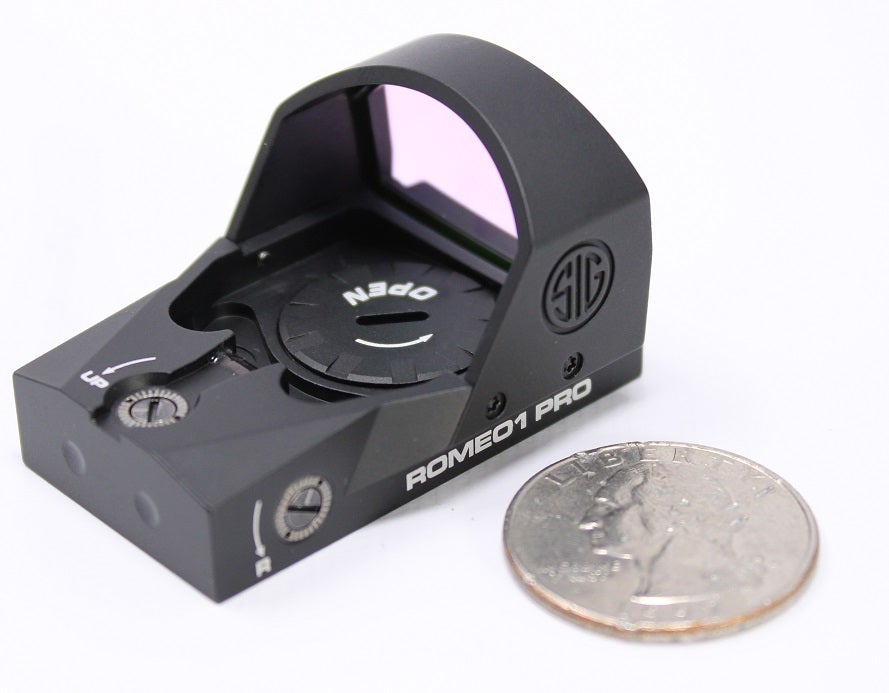
Obviously the smaller the better, since we’re dealing with modern semiautomatic pistols. But Sig Sauer definitely pulled off a very compact pistol red dot that’s lightweight without feeling cheap. Lower-cost micro dots tend to have a bit of extra bulk around the glass and body to fit cheaper and larger components, adding weight and reducing your sight picture. That certainly isn’t the case here.
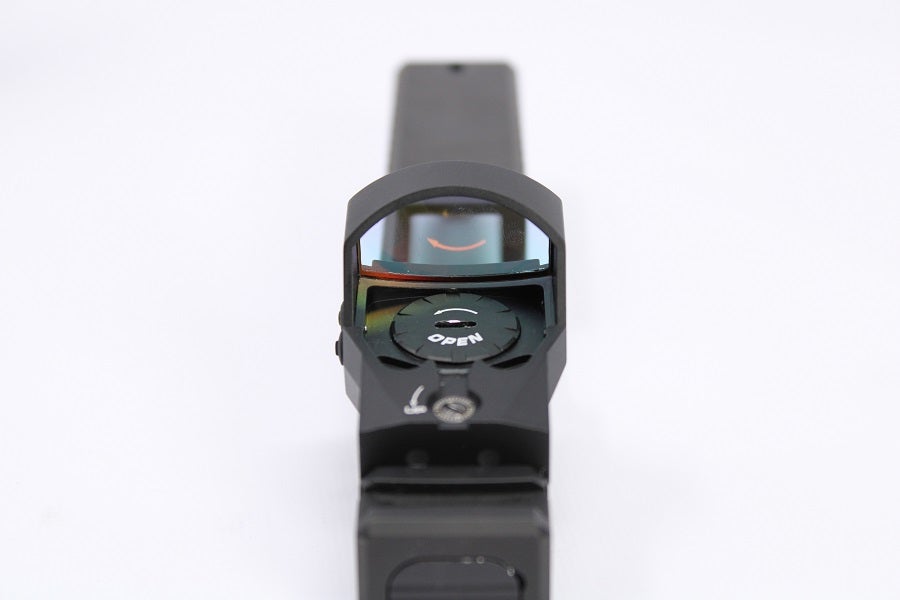
We threw it atop a Glock 19 slide and found the Romeo 1 is almost the exact same width, only getting wider just before the lens hood to accommodate a wider field of view. The sight hood certainly doesn’t get in the way, providing a clear, open sight picture.
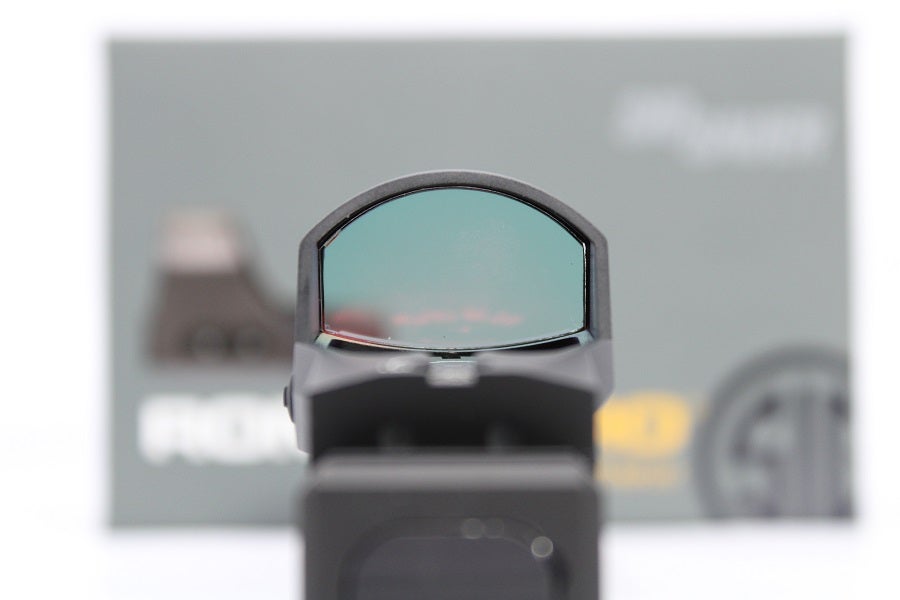
Take a close look and you’ll notice, just out of focus at the back, Sig includes a simple open rear iron sight that provides a perfect alignment with your typical open front sight post on virtually all modern semiautomatic handguns. A small but critical feature that, surprisingly, many other micro red dots lack – most often because their laser diodes are too bulky.
One thing I think a lot of red dots screw up is the overall clarity and shape of the actual reticle being produced by the diode. Cranking up the brightness on a lot of pistol red dots reveals a laser dot that can be misshapen, blurry or jagged. So I was very happy to find the Romeo1 PRO’s laser diode produces perhaps one of the cleanest, roundest reticles I’ve seen on any laser-powered optic.

We purposefully threw our camera out of focus to capture the diode’s projection and brightness, and it doesn’t disappoint. When you’re picking targets fast and drawing a bead, the clarity of the Romeo 1’s reticle does make a difference.
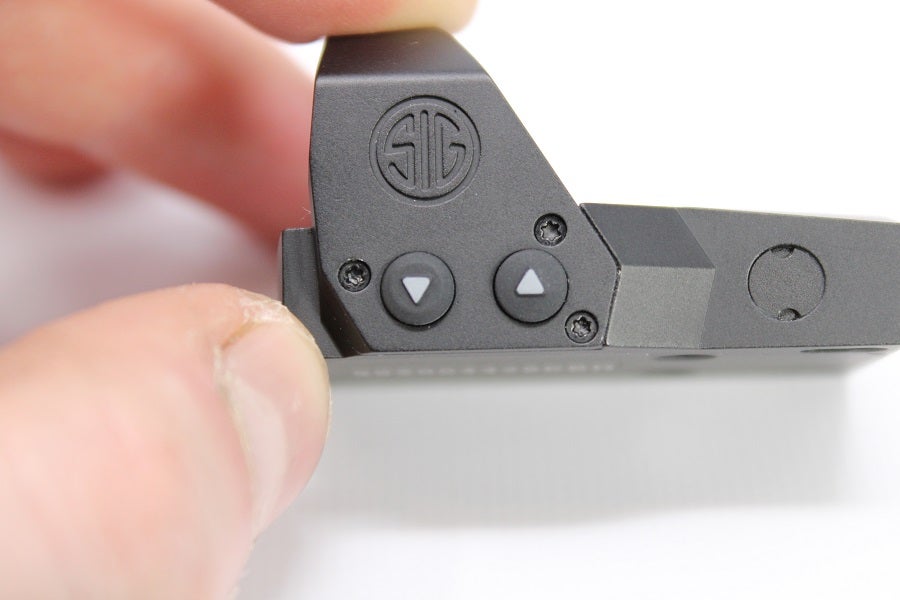
The diode can be manually turned on and off with the brightness adjustment buttons found on the left side of the lens hood. They have a nice tactile feel with bouncy rubber inputs and raised logos. You’ll find a few fasteners here, too – three Torx screws and a round, sealed access port for the red dot’s internals – which should be left alone.
Once you pick a brightness setting, you won’t need to bother with these buttons often. The PRO comes with Sig’s “MOTAC” system: Motion-activated illumination. That means your red dot will power on automatically once you draw it from a holster or start squeezing rounds off. The dot will also power off automatically after 2 minutes of inactivity, too. Of course, you can always disable (and re-enable) MOTAC by pressing and holding both brightness buttons for 3 seconds.

Opposite the brightness settings, we find the windage adjustment knob and two Torx-head fasteners on the right side of the optic’s body. The adjustment knob is easily ratcheted with the provided multi-tool smaller flat.
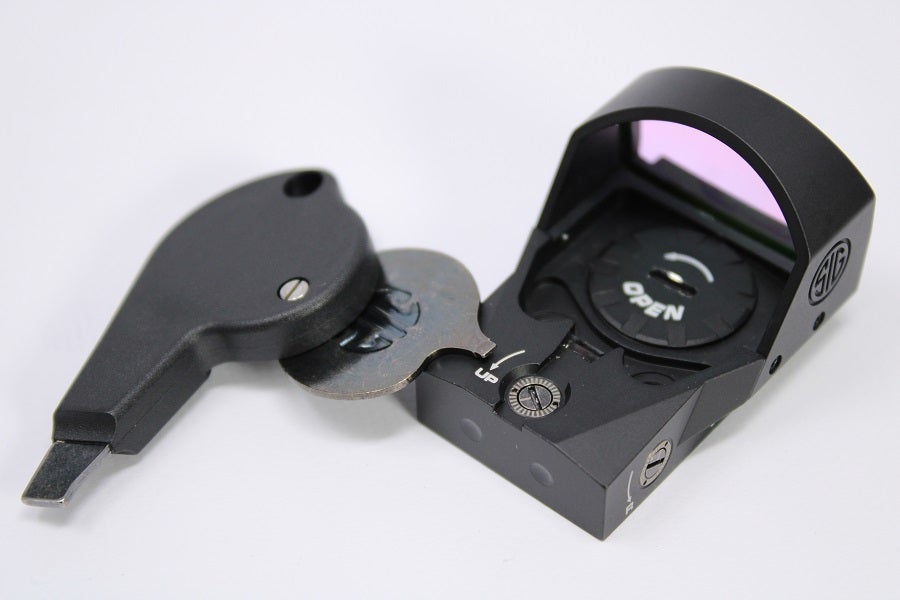
Each click is audible and crisp, tight enough to hold your zero on big calibers and after a good bump n’ bang or two. That Sig managed to keep the adjustment knobs recessed within the Romeo’s small housing is expected at this price range. But I am impressed by how well each adjustment ratchets and locks. Sig calls this their “TruHold Lockless Zeroing” system, which uses two springs on each knob to prevent them from turning without user input.
The Romeo’s knobs look and feel quite a lot like those found on the beautifully crafted Trijicon ACOG. Keep in mind, that scope costs around three times this little red dot’s MSRP. Each tick mark represents 1 MOA (1″ at 100 yards) on each knob.
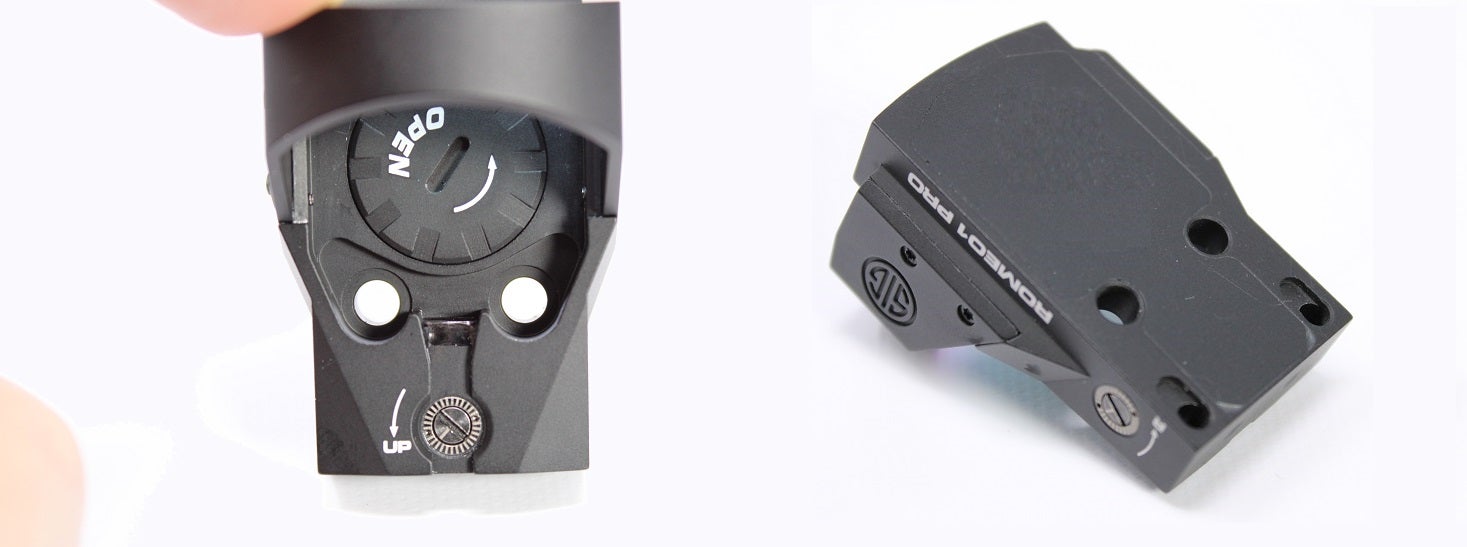
The Romeo features a very thick bottom plate with solid machine work. Each hole is rounded smooth, with no sharp edges or lathe or mill markings to speak of. Each mounting bolt sits relatively flush (with or without the steel hood) within the red dot’s housing once torqued to your cut slide. Sig says to tighten each bolt to approximately 28 to 30 inch-pounds. You probably don’t need to fret much about this. Just get each bolt hand tight, then give each a quarter- to half-turn further. The blue Loctite will do a well enough job of keeping everything snug in spite of recoil and movement.
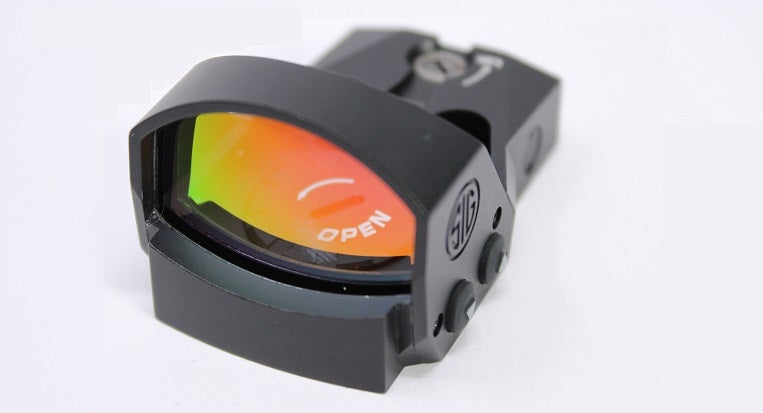
The glass and multi-coat treatments on the Romeo’s optic are, of course, perfect. I saw zero distortions or fish-eye lens effects while sighting downrange in bright light, sunlight, and low light conditions. The multi-coat treatment on the Romeo 1 PRO’s lens does a great job at enhancing contrast and painting a bright sight picture alongside the laser at any brightness setting. What I noticed most of all was how bright the diode gets. Sig uses some sort of “notch reflector” (as they call it) coating that specifically brightens laser energy, boosting overall run time by affording a lower brightness setting relative to ambient light around you.
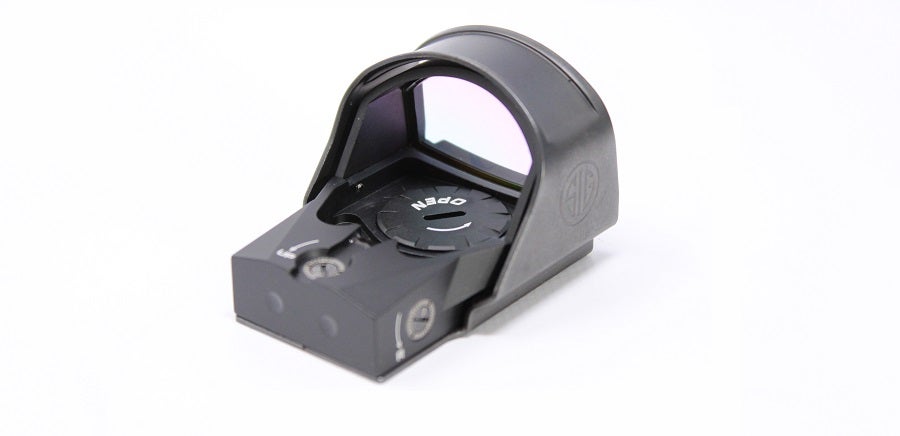
For being a relatively simple, small addition to the Romeo 1, Sig’s steel protective hood is probably one of my favorite optics accessories I’ve ever come across. In fact, it’s probably one of the first I actually want to use – because it does its job well and it looks pretty badass.
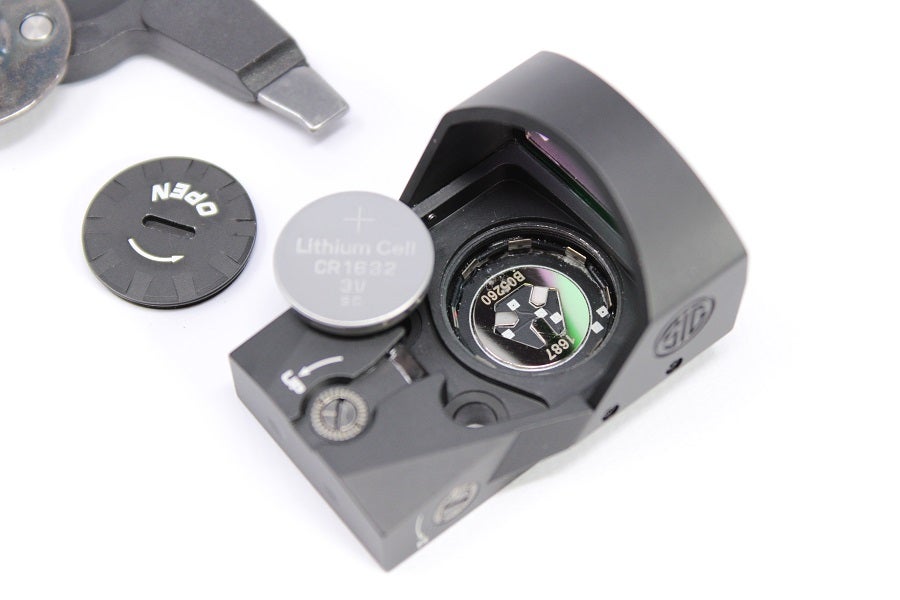
Getting the Romeo 1 to work out of the box is easy. Pop off the battery cover by using the large flat on the multi-tool. Inside, the unit gets powered by dropping the CR1632 atop the reflective battery contact. Make sure the positive lead (+) is facing up. The battery compartment has a relatively thick rubber O-ring for waterproofing, so moderate force is required to properly torque the cover back down. Once you’re powered up, you’ll get about 20,000 hours of battery life. Not too shabby for a glorified watch battery.
Is the Sig Sauer Romeo 1 PRO comparatively high price worth its best-in-class performance? This writer believes so. If you’re shopping for a handgun red dot, chances are you’re a pretty enthusiastic shooter who probably daily carries. It pays to invest in equipment that is as reliable as the gun it’s being installed on – especially when it comes to personal defense or competition and performance.
Besides, is there anything not to like about the Romeo? No. I’m a picky shooter with a knack for avoiding hardware that doesn’t fulfill every aspect of its form and function perfectly. The Romeo 1 PRO does just that. It looks high-speed, it’s impossibly light and small, yet it can take a serious beating while providing an incredibly crisp, bright, and clear reticle with a wide sight picture. You can’t ask for much more. In a rare case for Sig Sauer, this writer finds the price fits the piece instead of coming off as a “premium charge” for showing off a certain brand in the holster.

